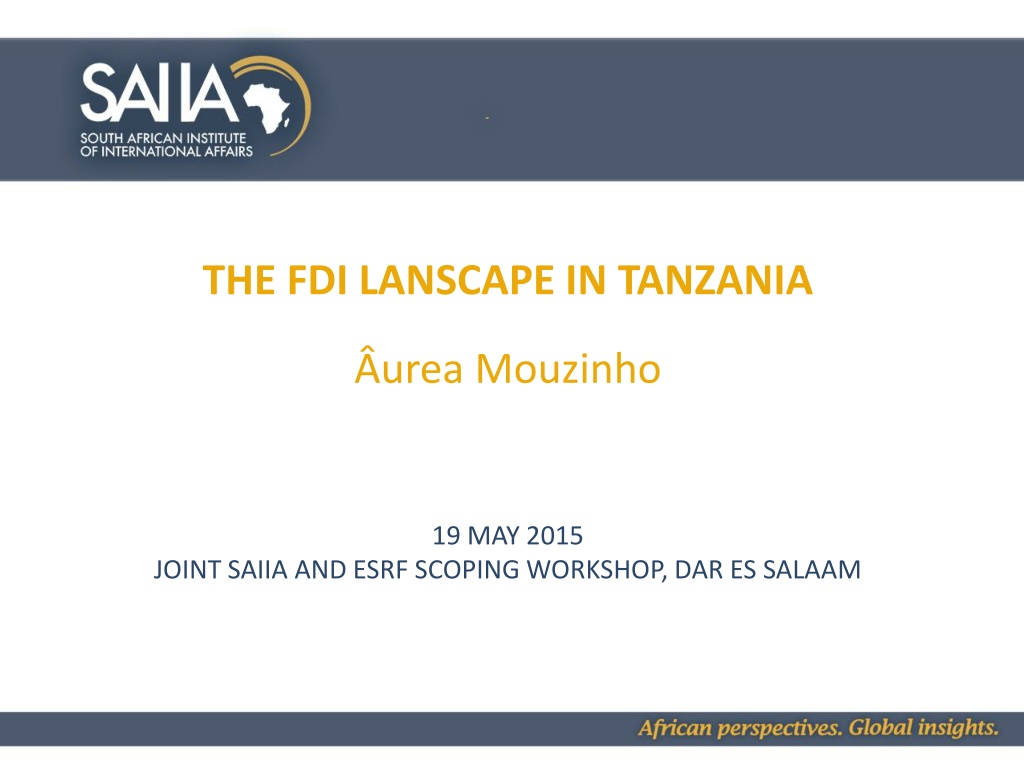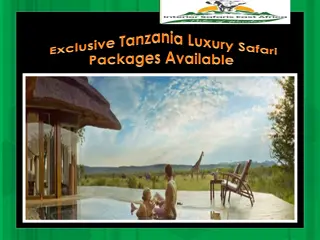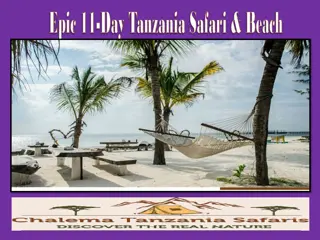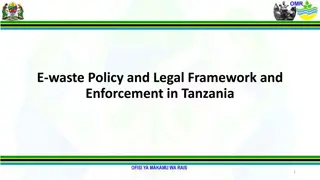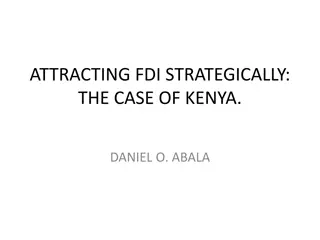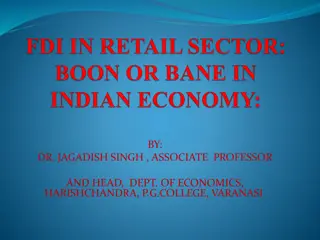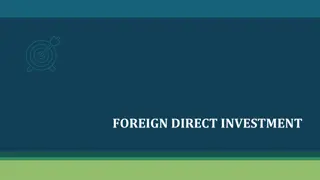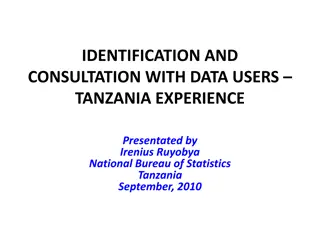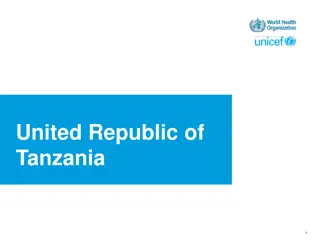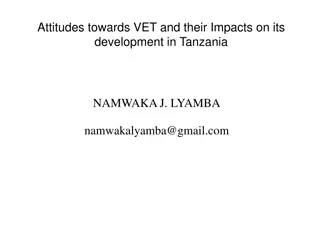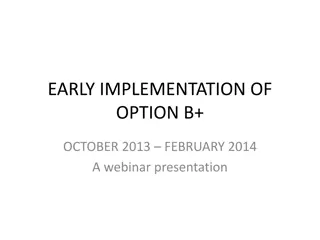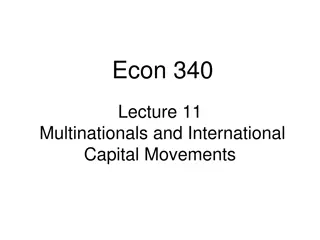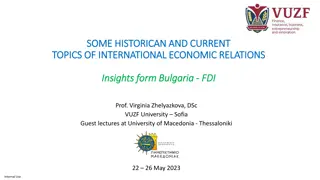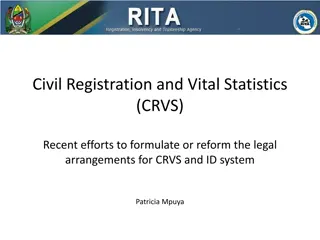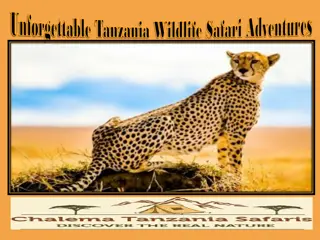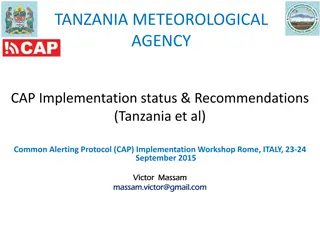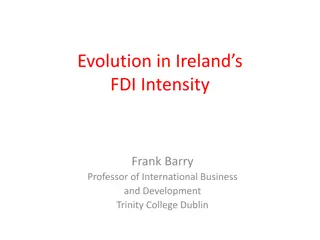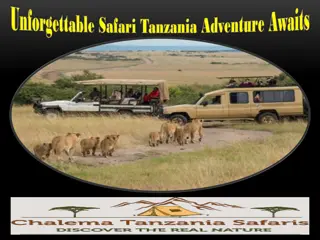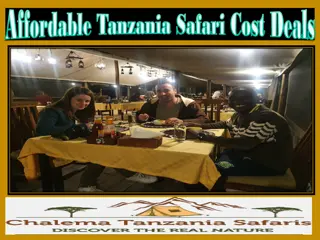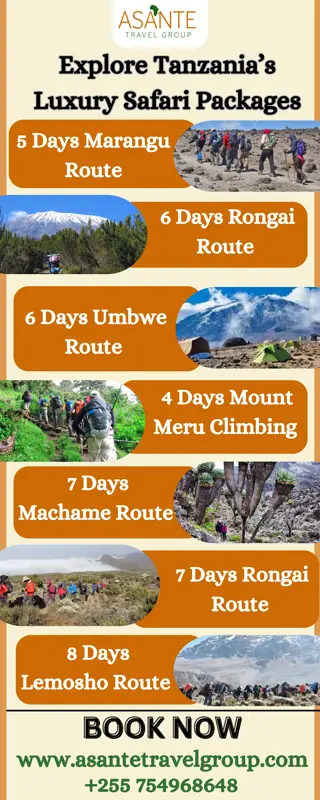The FDI Landscape in Tanzania: Overview and Insights
Size, nature, and attitude towards FDI in Tanzania, comparison with other economies in SADC and EAC, FDI regulation, contribution to technological advancement. Tanzania's peaceful environment, geographical advantage, opportunities for private sector investment, and initiatives to improve the business environment are highlighted.
Download Presentation

Please find below an Image/Link to download the presentation.
The content on the website is provided AS IS for your information and personal use only. It may not be sold, licensed, or shared on other websites without obtaining consent from the author.If you encounter any issues during the download, it is possible that the publisher has removed the file from their server.
You are allowed to download the files provided on this website for personal or commercial use, subject to the condition that they are used lawfully. All files are the property of their respective owners.
The content on the website is provided AS IS for your information and personal use only. It may not be sold, licensed, or shared on other websites without obtaining consent from the author.
E N D
Presentation Transcript
THE FDI LANSCAPE IN TANZANIA urea Mouzinho 19 MAY 2015 JOINT SAIIA AND ESRF SCOPING WORKSHOP, DAR ES SALAAM
OVERVIEW 1. Size, nature, and attitude towards FDI in Tanzania FDI flows, stocks, origins, sectors, opportunities Comparison with other economies in SADC and EAC Attitude towards foreign investors at different sectors Tanzanian FDI regulation and promotion The Investment Act of 1997 Bilateral Investment Treaties Attitude towards regional investment regulation in SADC and EAC Case Study The contribution of FDI in Tanzania to technological and human capital improvement in the agricultural sector. 2. 3.
PRELIMINARY INSIGHTS - HIGHLIGHTS Tanzania offers a peaceful and stable macroeconomic and political environment. It has a geographical advantaged in the East African Region (EAC) as it borders all of but one of the other five other member states, four of which are landlocked and therefore rely on the Dar Es Salaam port to access international markets. Membership in SADC in addition to the EAC makes Tanzania one of the key gateways into the continent, which a major point of attraction for both domestic and foreign investors. There is untapped potential for private sector investment in infrastructure but also in value adding sectors such as agriculture and manufacturing.
PRELIMINARY INSIGHTS - HIGHLIGHTS The establishing of the Tanzanian Investment Centre (TIC) as one-stop-shop to facilitate investment registration was significant in reducing the registration hurdles for investors. The predictability of the investment regulatory environment is also an important enabling factor for investors, and initiatives such as Big Results Now (BRN) have shown government s commitment to continue improving the business environment by reducing hurdles to do with land tenure, corruption, taxation, skills shortages and enforcement of the rule of the law.
ISSUES ON INTEREST How do the sources and sectors of FDI into Tanzania differ from other African countries? How does the business environment in Tanzania compare with that of other economies? How successful have been the efforts to address deficiencies in the business environment (e.g. Big Results Now)? What are the key barriers hindering to success? How does Tanzania reconcile the domestic investment regulation with bilateral, regional and multi-lateral investment treaties/agreements? What is Tanzania s stance on regional (EAC and SADC) investment governance? What does the country stand to gain and/or lose from such arrangements.
ISSUES OF INTEREST What measures are being taken/will be taken to ensure effective and sustainable transfer of skills and technology from foreign firms in the agricultural sector? How successful have those initiatives been? What are the key barriers to success?
